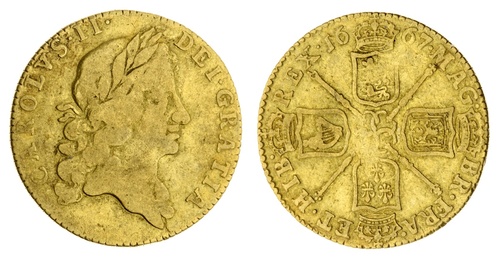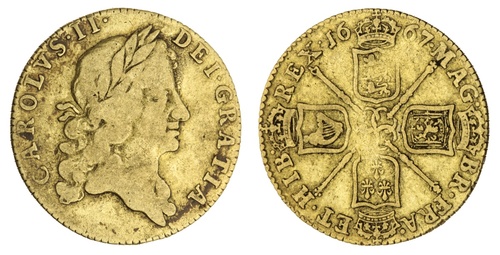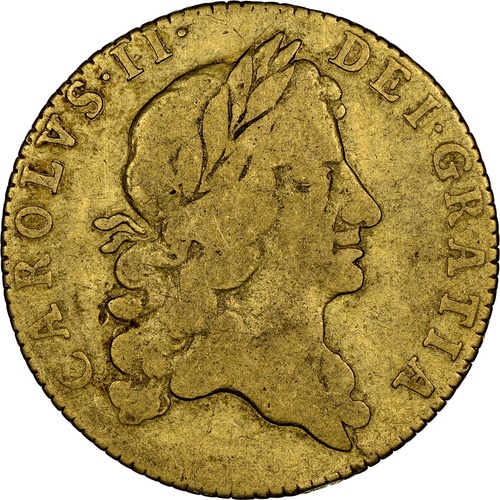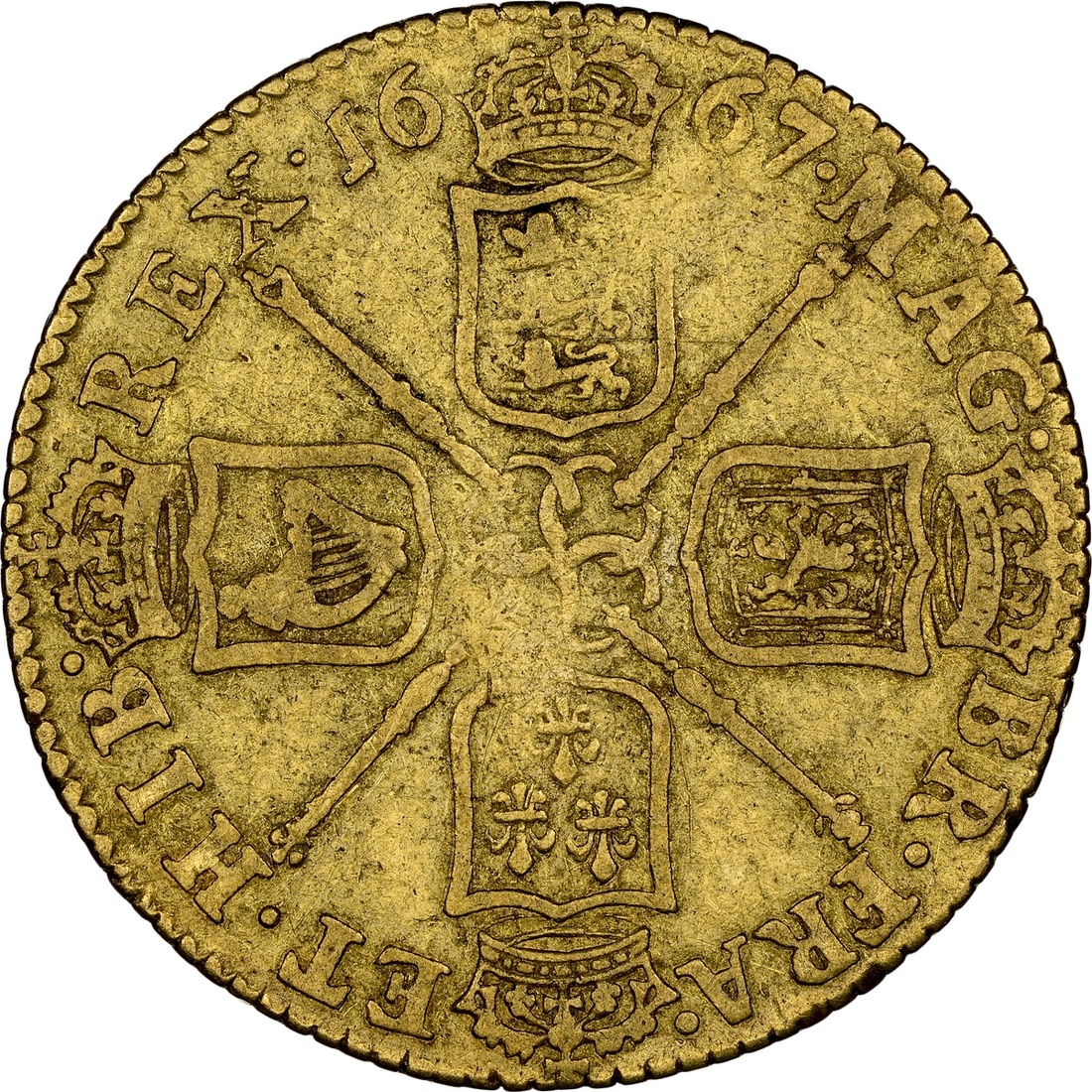Auction: 22027 - The "Ellerby Area" Hoard of English Gold Coins
Lot: 94
The Remarkable "Ellerby Area" Hoard of English Gold Coins (1610-1727) | Charles II (1660-1685), Guinea, 1667, third laureate head right, King's nose points to R, rev. stops after FRA and HIB, crowned shields cruciform, emblem-adorned sceptres in angles, six strings to harp, edge straight milled, 8.11g [125.2grns], 6h (PAS: YORYM-18E848 = BM 2019 T668/76 this coin; MCE 61; Farey 60 [ER]; EGC - [cf. 237 R2]; Schneider II, 442/-; Spink 3342), tiny rim bruise at 6 o'clock, with even circulation wear, strictly fair to almost fine in parts, nevertheless extremely rare with this bust type, with NGC 'Ellerby' Certification (#6380983-076)
Bull lists only one type for this date, with the King's nose pointing to G and with no stop after FRA. This coin has the nose pointing to R and a stop after FRA. As a variety it would appear to be much scarcer than Bull 237. A similar coin with the nose pointing to R and the stop after FRA, was recovered from the wreck of H.M.S. Association, Sotheby, 28 January 1970, lot 1 and last seen at these rooms (Spink, 24 September 2008, lot 918).
In further study, it would appear like with the Shilling coinage, the Guinea portrait would also undergo a subtle redesign between 1666 and 1668. As has been well documented within the Shilling series, the evolution of the bust varieties over Julian calendar year of 1666 results in the transition from the first bust to the second bust via minor variations of the laurel tips, and in direct consequence four different varieties for that date. The same observation and redesign is also testified on the Guinea portrait. Presently the third Guinea head is delineated for the period 1664 to 1673. However, and in truth, it is better understood in two phases: the third bust proper (1664-1667); and the third bust variety (1667-1673). The subtle but important redesign differences are to be noted in the silhouette of the highest tips of the laurel wreath. In the earlier phase they sit taller with the proudest two leaves appearing 'forward slanting'. However the later issues have these same two leaves re-engraved much shorter as if "buried" in the wreath and their profile more clearly straight. Similarly the lowest clump of the King's hair is thinned from the first to second phase with the earlier issues having two trailing strands of hair (fore and aft of the main clump) whereas the later phase issues have only a trailing clump aft. Visually too the narrowing of the letter spacing results in the King's regnal number shifting from cresting the top of the King's head to barely gracing 'his crown'. Whilst not previously recognised even by the most recent reference works, it is now evident that a subtle redesign of the third Guinea head occurred early in 1667, which became dominant for the remainder of the third coinage. For the benefit of future numismatic awareness and to draw a clear distinction between these two phases of bust variety that occurred in the gold specie of 1667, it would now seem meritworthy to delineate these two issues as Spink 3342 and 3342A (as proposed in this catalogue). Perhaps then we will further our understanding of the complex Mint activities that occurred between 1666 and 1668, that resulted in the bizarre 'Guinea head' Shilling, as well as and the excessively rare 'first bust variety' 1666 Shilling rediscovered by the present cataloguer after half-a-century's absence from the numismatic record and sold through these rooms in January 2021 for a new world record for a currency-issue Shilling.
Subject to 20% VAT on Buyer’s Premium. For more information please view Terms and Conditions for Buyers.
Sold for
£2,700
Starting price
£400











